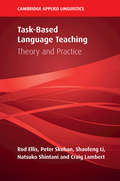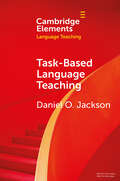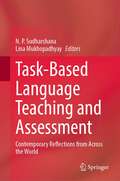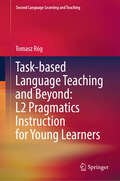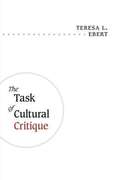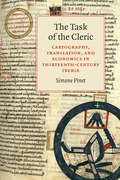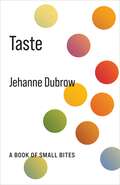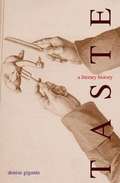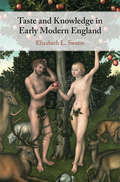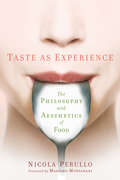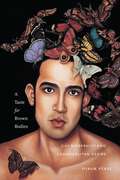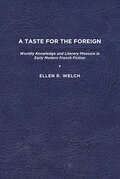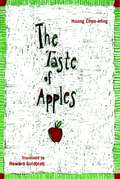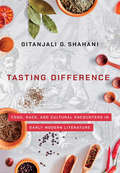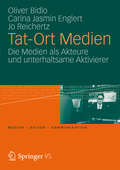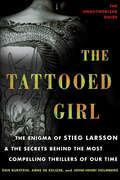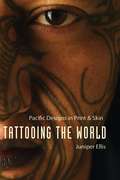- Table View
- List View
Tarjetas de vocabulario [Grado 1] (¡Arriba la Lectura!)
by Houghton Mifflin Harcourt Publishing CompanyNIMAC-sourced textbook
Tarjetas de vocabulario [Grado 2] (¡Arriba la Lectura!)
by Houghton Mifflin Harcourt Publishing CompanyNIMAC-sourced textbook
Tarjetas de vocabulario [Grado 4] (¡Arriba la Lectura!)
by Houghton Mifflin Harcourt Publishing CompanyNIMAC-sourced textbook
Tarjetas de vocabulario [Grado 5] (¡Arriba la Lectura!)
by Houghton Mifflin Harcourt Publishing CompanyNIMAC-sourced textbook
Tarjetas del abecedario [Grado K] (¡Arriba la Lectura!)
by Houghton Mifflin Harcourt Publishing CompanyNIMAC-sourced textbook
Task-Based Language Teaching: Theory and Practice (Cambridge Applied Linguistics)
by Rod Ellis Peter Skehan Shaofeng Li Natsuko Shintani Craig LambertTask-based language teaching is an approach which differs from traditional approaches by emphasising the importance of engaging learners' natural abilities for acquiring language incidentally through the performance of tasks that draw learners' attention to form. Drawing on the multiple perspectives and expertise of five leading authorities in the field, this book provides a comprehensive and balanced account of task-based language teaching (TBLT). Split into five sections, the book provides an historical account of the development of TBLT and introduces the key issues facing the area. A number of different theoretical perspectives that have informed TBLT are presented, followed by a discussion on key pedagogic aspects - syllabus design, methodology of a task-based lesson, and task-based assessment. The final sections consider the research that has investigated the effectiveness of TBLT, addresses critiques and suggest directions for future research. Task-based language teaching is now mandated by many educational authorities throughout the world and this book serves as a core source of information for researchers, teachers and students.
Task-Based Language Teaching (Elements in Language Teaching)
by Daniel O. JacksonThis Element is a guide to task-based language teaching (TBLT), for language instructors, teacher educators, and other interested parties. The work first provides clear definitions and principles related to communication task design. It then explains how tasks can inform all stages of curriculum development. Diverse, localized cases demonstrate the scope of task-based approaches. Recent research illustrates the impact of task design (complexity, mode) and task implementation (preparation, interaction, repetition) on various second language outcomes. The Element also describes particular challenges and opportunities for teachers using tasks. The epilogue considers the potential of TBLT to transform classrooms, institutions, and society.
Task-Based Language Teaching and Assessment: Contemporary Reflections from Across the World
by N. P. Sudharshana Lina MukhopadhyayThis book provides interdisciplinary perspectives on task-based language teaching (TBLT) and task-based language assessment (TBLA) in English as a second language (ESL) context. It discusses theoretical and experimental insights of TBLT and TBLA from cognitive, cognitive linguistic, and psycholinguistic viewpoints. The chapters, written by leading language teaching specialists in the field, introduce the reader to a comprehensive range of issues related to TBLT and TBLA such as curriculum design, materials development, and classroom teaching & testing. With interdisciplinary appeal, the book is a valuable resource for researchers in task-based language teaching and assessment. It is equally useful for teachers to whom it offers practical suggestions for designing tasks for teaching and testing.
Task-based Language Teaching and Beyond: L2 Pragmatics Instruction for Young Learners (Second Language Learning and Teaching)
by Tomasz RógThis book provides a groundbreaking exploration of how task-based language teaching (TBLT) can effectively develop second language (L2) pragmatic competence in young learners. Bridging the gap between TBLT and L2 pragmatics, this volume addresses critical issues in language education, offering insights into teaching key speech acts. Specifically, it compares the outcomes of TBLT with the traditional PPP framework in teaching L2 speech acts to Polish learners of L2 English aged 8 to 9. Chapter 1 deals with pragmatics and pragmatic competence, highlighting its importance in effective communication and language use in social contexts. It addresses L2 pragmatics, the development of L2 pragmatic competence, and the challenges in teaching and assessing this competence. Chapter 2 overviews TBLT, its theoretical foundations, practical implementation, and related empirical research. It discusses the cognitive-interactionist and sociocultural perspectives on L2 acquisition and the effectiveness of tasks. Chapter 3 reviews empirical research on using tasks in teaching L2 pragmatics, especially to young learners. Chapter 4 details the research methodology used in the study, including the context, participants, target speech acts, data elicitation instruments, and analysis procedures. Chapter 5 presents the results of the study. Chapter 6 discusses the findings, their pedagogical implications, and the limitations of the study. Chapter 7 offers conclusions. Rich with pedagogical implications, the volume is an essential resource for researchers and practitioners interested in task-based and task-supported teaching, L2 pragmatics, and innovative approaches to teaching young learners.
The Task of Cultural Critique
by Teresa L. Ebert"A stimulating, path-breaking text that stands out as both an anti-text in the arena of cultural studies and as a classic Marxist analysis of the field of cultural critique." --Peter McLaren, author of Che Guevara, Paulo Freire, and the Pedagogy of Revolution "This powerful book confirms that Teresa L. Ebert is one of the most significant Marxist theorists currently writing about the humanities." --Barbara Foley, author of Spectres of 1919: Class and Nation in the Making of the New Negro In this study, Teresa L. Ebert makes a spirited, pioneering case for a new cultural critique committed to the struggles for human freedom and global equality. Demonstrating the implosion of the linguistic turn that isolates culture from historical processes, The Task of Cultural Critique maps the contours of an emerging materialist critique that contributes toward a critical social and cultural consciousness. Through groundbreaking analyses of cultural texts, Ebert questions the contemporary Derridan dogma that asserts "the future belongs to ghosts." Events-to-come are not spectral, she contends, but the material outcome of global class struggles. Not "hauntology" but history produces cultural practices and their conflitive representations--from sexuality, war, and consumption to democracy, torture, globalization, and absolute otherness. With close readings of texts from Proust and Balzac to "Chick Lit," from Lukács, de Man, Deleuze, and Marx to Derrida, Žižek, Butler, Kollontai, and Agamben, the book opens up new directions for cultural critique today.
The Task of the Cleric: Cartography, Translation, and Economics in Thirteenth-Century Iberia
by Simone PinetComposed in early thirteenth-century Iberia, the Libro de Alexandre was Spain's first vernacular version of the Romance of Alexander and the first poem in the corpus now known as the mester de clerecía. These learned works, written by clergy and connected with both school and court, were also tools for the articulation of sovereignty in an era of prolonged military and political expansion.In The Task of the Cleric, Simone Pinet considers the composition of the Libro de Alexandre in the context of cartography, political economy, and translation. Her discussion sheds light on how clerics perceived themselves and on the connections between literature and these other activities. Drawing on an extensive collection of early cartographic materials, much of it rarely considered in conjunction with the romance, Pinet offers an original and insightful view of the mester de clerecía and the changing role of knowledge and the clergy in thirteenth-century Iberia.
Taste: A Book of Small Bites (No Limits)
by Jehanne DubrowTaste is a lyric meditation on one of our five senses, which we often take for granted. Structured as a series of “small bites,” the book considers the ways that we ingest the world, how we come to know ourselves and others through the daily act of tasting.Through flavorful explorations of the sweet, the sour, the salty, the bitter, and umami, Jehanne Dubrow reflects on the nature of taste. In a series of short, interdisciplinary essays, she blends personal experience with analysis of poetry, fiction, music, and the visual arts, as well as religious and philosophical texts. Dubrow considers the science of taste and how taste transforms from a physical sensation into a metaphor for discernment.Taste is organized not so much as a linear dinner served in courses but as a meal consisting of meze, small plates of intensely flavored discourse.
Taste: A Literary History
by Denise GiganteWhile most accounts of aesthetic history avoid the gustatory aspects of taste, this book rewrites standard history to uncover the constitutive and dramatic tension between appetite and aesthetics at the heart of British literary tradition. From Milton through the Romantics, the metaphor of taste serves to mediate aesthetic judgment and consumerism, gusto and snobbery, gastronomes and gluttons, vampires and vegetarians, as well as the philosophy and physiology of food. The author advances a theory of taste based on Milton's model of the human as consumer (and digester) of food, words, and other commodities--a consumer whose tasteful, subliminal self remains haunted by its own corporeality. Radically rereading Wordsworth's feeding mind, Lamb's gastronomical essays, Byron's cannibals and other deviant diners, and Kantian nausea, Taste situates Romanticism as a period that naturally saw the rise of the restaurant and the pleasures of the table as a cultural field for the practice of aesthetics.
Taste and Knowledge in Early Modern England
by Elizabeth L. SwannElizabeth Swann investigates the relationship between the physical sense of taste and taste as a figurative term associated with knowledge and judgment in early modern literature and culture. She argues that - unlike aesthetic taste in the eighteenth century - discriminative taste was entwined with embodied experience in this period. Although taste was tarnished by its associations with Adam and Eve's fall from Eden, it also functioned positively, as a source of useful, and potentially redemptive, literary, spiritual, experimental, and intersubjective knowledge. Taste and Knowledge in Early Modern England juxtaposes canonical literary works by authors such as Shakespeare with a broad range of medical, polemical, theological, philosophical, didactic, and dietetic sources. In doing so, the book reveals the central importance of taste to the experience and articulation of key developments in the literate, religious, and social cultures of the sixteenth and seventeenth centuries.
Taste as Experience: The Philosophy and Aesthetics of Food (Arts and Traditions of the Table: Perspectives on Culinary History)
by Nicola PerulloTaste as Experience puts the pleasure of food at the center of human experience. It shows how the sense of taste informs our preferences for and relationship to nature, pushes us toward ethical practices of consumption, and impresses upon us the importance of aesthetics. Eating is often dismissed as a necessary aspect of survival, and our personal enjoyment of food is considered a quirk. Nicola Perullo sees food as the only portion of the world we take in on a daily basis, constituting our first and most significant encounter with the earth. Perullo has long observed people's food practices and has listened to their food experiences. He draws on years of research to explain the complex meanings behind our food choices and the thinking that accompanies our gustatory actions. He also considers our indifference toward food as a force influencing us as much as engagement. For Perullo, taste is value and wisdom. It cannot be reduced to mere chemical or cultural factors but embodies the quality and quantity of our earthly experience.
A Taste for Brown Bodies: Gay Modernity and Cosmopolitan Desire (Sexual Cultures #23)
by Hiram PérezWinner, LGBT Studies Lammy Award presented by Lambda LiteraryNeither queer theory nor queer activism has fully reckoned with the role of race in the emergence of the modern gay subject. In A Taste for Brown Bodies, Hiram Pérez traces the development of gay modernity and its continued romanticization of the brown body. Focusing in particular on three figures with elusive queer histories—the sailor, the soldier, and the cowboy— Pérez unpacks how each has been memorialized and desired for their heroic masculinity while at the same time functioning as agents for the expansion of the US borders and neocolonial zones of influence. Describing an enduring homonationalism dating to the “birth” of the homosexual in the late 19th century, Pérez considers not only how US imperialist expansion was realized, but also how it was visualized for and through gay men. By means of an analysis of literature, film, and photographs from the 19th to the 21st centuries—including Herman Melville’s Billy Budd, Anne Proulx’s “Brokeback Mountain,” and photos of abuse at the Abu Ghraib prison—Pérez proposes that modern gay male identity, often traced to late Victorian constructions of “invert” and “homosexual,” occupies not the periphery of the nation but rather a cosmopolitan position, instrumental to projects of war, colonialism, and neoliberalism. A Taste for Brown Bodies argues that practices and subjectivities that we understand historically as forms of homosexuality have been regulated and normalized as an extension of the US nation-state, laying bare the tacit, if complex, participation of gay modernity within US imperialism.
A Taste for the Foreign: Worldly Knowledge and Literary Pleasure in Early Modern French Fiction
by Ellen R. WelchA Taste for the Foreign examines foreignness as a crucial aesthetic category for the development of prose fiction from Jacques Amyot’s 1547 translation of The Ethiopian Story to Antoine Galland’s early eighteenth-century version of The Thousand and One Nights. While fantastic storylines and elements of magic were increasingly shunned by a neo-classicist literary culture that valued verisimilitude above all else, writers and critics surmised that the depiction of exotic lands could offer a superior source for the novelty, variety, and marvelousness that constituted fiction’s appeal. In this sense, early modern fiction presents itself as privileged site for thinking through the literary and cultural stakes of exoticism, or the taste for the foreign. Long before the term exoticism came into common parlance in France, fiction writers thus demonstrated their understanding of the special kinds of aesthetic pleasure produced by evocations of foreignness, developing techniques to simulate those delights through imitations of the exotic. As early modern readers eagerly consumed travel narratives, maps, and international newsletters, novelists discovered ways to blur the distinction between true and imaginary representations of the foreign, tantalizing readers with an illusion of learning about the faraway lands that captured their imaginations. This book analyzes the creative appropriations of those scientific or documentary forms of writing that claimed to inform the French public about exotic places. Concentrating on the most successful examples of some of the most important sub-genres of prose fiction in the long seventeenth century—heroic romances, shorter urban novels, fictional memoirs, and extraordinary voyages—the book examines how these types of fiction creatively appropriate the scientific or documentary forms of writing that claimed to inform the French public about exotic places. Published by University of Delaware Press. Distributed worldwide by Rutgers University Press.
The Taste of Apples (Modern Chinese Literature from Taiwan)
by Huang Huang Chun-mingFrom the preeminent writer of Taiwanese nativist fiction and the leading translator of Chinese literature come these poignant accounts of everyday life in rural and small-town Taiwan. Huang is frequently cited as one of the most original and gifted storytellers in the Chinese language, and these selections reveal his genius. In "The Two Sign Painters," TV reporters ambush two young workers from the country taking a break atop a twenty-four-story building. "His Son's Big Doll" introduces the tortured soul inside a walking advertisement, and in "Xiaoqi's Cap" a dissatisfied pressure-cooker salesman is fascinated by a young schoolgirl.Huang's characters—generally the uneducated and disadvantaged who must cope with assaults on their traditionalism, hostility from their urban brethren and, of course, the debilitating effects of poverty—come to life in all their human uniqueness, free from idealization.
Tasting Difference: Food, Race, and Cultural Encounters in Early Modern Literature
by Gitanjali G. ShahaniTasting Difference examines early modern discourses of racial, cultural, and religious difference that emerged in the wake of contact with foreign peoples and foreign foods from across the globe. Gitanjali Shahani reimagines the contact zone between Western Europe and the global South in culinary terms, emphasizing the gut rather than the gaze in colonial encounters.From household manuals that instructed English housewives how to use newly imported foodstuffs to "the spicèd Indian air" of A Midsummer Night's Dream, from the repurposing of Othello as an early modern pitchman for coffee in ballads to the performance of disgust in travel narratives, Shahani shows how early modern genres negotiated the allure and danger of foreign tastes.Turning maxims such as "We are what we eat" on their head, Shahani asks how did we (the colonized subjects) become what you (the colonizing subjects) eat? How did we become alternately the object of fear and appetite, loathing and craving? Shahani takes us back several centuries to the process by which food came to be inscribed with racial character and the racial other came to be marked as edible, showing how the racializing of food began in an era well before chicken tikka masala and Balti cuisine. Bringing into conversation critical paradigms in early modern studies, food studies, and postcolonial studies, she argues that it is in the writing on food and eating that we see among the earliest configurations of racial difference, and it is experienced both as a different taste and as a taste of difference.
Tat-Ort Medien
by Oliver Bidlo Carina Jasmin Englert Jo ReichertzDer Alltag menschlichen Zusammenlebens in modernen (nicht nur) westlichen Gesellschaften ist durch eine tiefgreifende und umfassende Mediatisierung gekennzeichnet: Medien spielen bei der kommunikativen Konstruktion von Wirklichkeit eine immer gewichtigere Rolle - vor allem dadurch, dass sie neben den Kommunikationsinhalten auch die Kommunikationsformen und das kommunikative und gesellschaftliche Handeln maßgeblich beeinflussen. Medien werden auch im Bereich der Inneren Sicherheit zunehmend eigenständige Akteure, die auf die Sicherheit ihrer Kunden achten und in deren Interesse selbst aktiv werden. Medien werden darüber hinaus auch Aktivierer, die ihre Kunden unterhaltsam dazu anhalten, sich regelkonform selbst zu führen oder aber sich in Maßen an der ,Arbeit' der Medien selbst zu beteiligen. Wir sind Zeitzeugen einer tief greifenden Mediatisierung der Sicherheitspolitik.
The Tattooed Girl: The Enigma of Stieg Larsson & the Secrets Behind the Most Compelling Thrillers of Our Time
by Dan Burstein Arne De Keijzer John-Henri HolmbergThe fascinating stories behind what have been rightly called the "hottest books on the planet": The Girl with the Dragon Tattoo, The Girl Who Played with Fire, and The Girl Who Kicked the Hornet's NestThrough insightful commentary and revealing interviews, you will enter the unique world of Lisbeth Salander, Mikael Blomkvist---and of Stieg Larsson himself---discovering the fascinating real-life experiences and incidents involving Swedish politics, violence against women, and neo-Nazis that are at the heart of Larsson's work.John-Henri Holmberg, a Swedish author and close friend of Larsson for more than three decades, provides a unique insider's look into the secrets of the author's imaginative universe, his life, and his ideas for future books---including the mysterious "fourth book" in the series, which Larsson had started but not finished at the time of his death.Included within are answers to compelling questions on every Larsson fan's mind: · What makes the Lisbeth Salander character so unique and memorable? Why have so many people from all backgrounds and with all kinds of tastes found The Girl with the Dragon Tattoo so riveting?· What are the speculations---and what is the truth---about Stieg Larsson's tragic death at age fifty, just before the publication of his novels, and the bitter battle over his legacy?· What changes were made in the plots and translations of the novels after Larsson's death---and why?· How did Larsson's early interest in science fiction and American and British crime writers feed into his creation of the Millennium trilogy? · What were Larsson's ideas for the fourth book, and are there any clues to the plots he imagined for his ten-book series? Will we meet Lisbeth's twin sister, Camilla, or any of her other seven siblings that Zalachenko tells her she has? · Does Lisbeth Salander give feminism a new definition? · What will happen in the contentious battle between Stieg Larsson's life partner, Eva Gabrielsson, and his father and brother over the future of the books, as well as the billion dollars at stake in his legacy?· Who are the emerging Swedish crime writers we should pay attention to now?· And much, much more!
Tattooing the World: Pacific Designs in Print and Skin
by Juniper EllisIn the 1830s an Irishman named James F. O'Connell acquired a full-body tattoo while living as a castaway in the Pacific. The tattoo featured traditional patterns that, to native Pohnpeians, defined O'Connell's life; they made him wholly human. Yet upon traveling to New York, these markings singled him out as a freak. His tattoos frightened women and children, and ministers warned their congregations that viewing O'Connell's markings would cause the ink to transfer to the skin of their unborn children. In many ways, O'Connell's story exemplifies the unique history of the modern tattoo, which began in the Pacific and then spread throughout the world. No matter what form it has taken, the tattoo has always embodied social standing, aesthetics, ethics, culture, gender, and sexuality. Tattoos are personal and corporate, private and public. They mark the profane and the sacred, the extravagant and the essential, the playful and the political. From the Pacific islands to the world at large, tattoos are a symbolic and often provocative form of expression and communication.Tattooing the World is the first book on tattoo literature and culture. Juniper Ellis traces the origins and significance of modern tattoo in the works of nineteenth- and twentieth-century artists, travelers, missionaries, scientists, and such writers as Herman Melville, Margaret Mead, Albert Wendt, and Sia Figiel. Traditional Pacific tattoo patterns are formed using an array of well-defined motifs. They place the individual in a particular community and often convey genealogy and ideas of the sacred. However, outside of the Pacific, those who wear and view tattoos determine their meaning and interpret their design differently. Reading indigenous historiography alongside Western travelogue and other writings, Ellis paints a surprising portrait of how culture has been etched both on the human form and on a body of literature.

